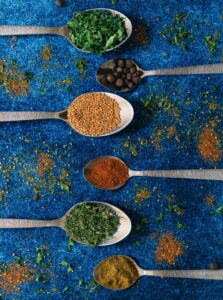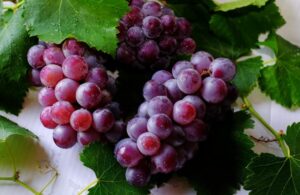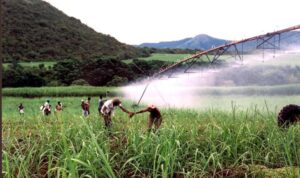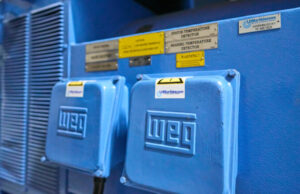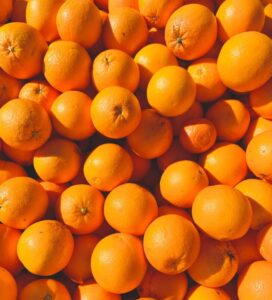This page looks at what happens downstream of the plantations: sawmilling, furniture making, paper and pulp production etc.
| TIMBER PROCESSING | |||
| Fibre | Sawmilling | Treated poles | Charcoal |
| Pulp milling Wood chip Fibre board From which come: (i) paper & paper products (ii) wood products | Mining timber Sawn lumber From which come: (i) wood products (ii) wood furniture | Treated poles | Charcoal |
The future demand for wood will depend on factors like global population growth, increasing living standards and wood’s cost competitiveness compared to substitute products. It is important to note that the forest-based industries go beyond wood-processing, furniture, pulp and paper. Through scientific advances like nano-technology they now provide raw material for the clothing and textiles, pharmaceuticals, rheology and food-processing sector.
International business environment
The products are categorised according to the harmonised system (HS), an international method for classifying products for trade purposes, with categories like wood chip, wood charcoal, timber board, mining timber, paper (Newsprint), paper (kraftliner) and poles and treated poles. Find more on the World Customs Organisation website, www.wcoomd.org.
Other relevant websites include:
- International Wood Products Association www.iwpawood.org
- International Council of Forest & Paper Associations (ICFPA) – a list of their global members is on its website, www.icfpa.org. One of these is the Paper Manufacturers Association of South Africa (PAMSA).
- Pulpapernews has international news for the pulp and paper industry, www.pulpapernews.com.
- Included in FAOSTAT’s international statistics are those of forest products. Go to www.fao.org/faostat/en/.
Find the African Development Bank report “Wood processing and trade of wood products in Africa” (June 2021). Looking at data from 12 selected West and Central African countries, its message is that adding value to wood products in this way can lead to jobs and wealth creation in Africa.
South Africa: imports and exports
Refer to this heading on the “Forestry” page.
Local business environment
Pulp & Paper Industry
The industry’s contribution to the South African GDP in 2020 was R30 billion, with a R9.3 billion contribution to the country’s balance of trade (PAMSA, 2022). Demand for recyclable paper bags and other paper-based consumer packaging has increased. In 2020, paper recovered for recycling amounted to 1.1 million tonnes, with an almost 70% paper recovery rate; 54% of locally made paper products contained recycled fibre (PAMSA, 2022).
Further reference:
- Find statistics on the Paper Manufacturers Association of South Africa (PAMSA) website, www.thepaperstory.co.za
- Find the Technical Association of the Pulp and Paper Industry of Southern Africa (TAPPSA) pages on the same website.
- Research and Markets. 2022. The Manufacture of Paper, Pulp and Paper Products in South Africa 2022. Available at www.researchandmarkets.com/reports/5624996/the-manufacture-of-paper-pulp-and-paper-products
The Paper Making Process
Sawmilling
The sawmilling industry is labour intensive and a key contributor to the rural economy.
Find updates on www.timber.co.za, website of Sawmilling South Africa.
Board Manufacturing
- Timber board refers to products, which are made by compressing woodchips and other wood residue into a condensed panel by using heat and pressure. The two types of timber board products are (i) particleboard (chipboard), used in in shopfitting, kitchen manufacturing, domestic and office furniture industry amongst others; and (ii) fibreboard, which includes medium density fibre board (MDF), insulation board and hardboard.
- The furniture manufacturing industry, the largest user of timber boards, is cyclical, with much higher production in the second half of the year, reaching a peak in the last quarter of the year, where manufacturers have to operate optimally.
- The export market for board products is subjected to production capacity of other world players and the variability of our exchange rate. A weaker Rand favours increased exports and vice versa. Timber boards are primarily exported to India, the rest of Africa, Europe and South America.
Wood Preservation
- The science of timber preservation entails the treatment of wood to make it more durable and therefore extending its service life.
- All wood preservatives used in South Africa have to be registered with the Department of Agriculture, Land Reform and Rural Development (DALRRD). Wood preservatives are divided into three main groups: (1). Water-borne preservatives, applied in a pressure treatment plant are traditionally organic chemicals dissolved in water. The most commonly used is Copper Chrome Arsenic (CCA), which is a heavy-duty preservative offering a broad spectrum of insecticidal and fungicidal protection. (2). Creosote is an oil-borne preservative, which is applied in an open or pressure treatment plant. It is a heavy duty preservative used primarily to treat wooden poles. (3). Light Organic Solvent Preservatives (LOSP), are named so because the term LOSP describes the solvent carrier of the preservative. This preservative is mainly used for timber mouldings and engineered wood products.
Visit www.sawpa.co.za for information on the South African Wood Preservers Association’s industry.
Furniture Manufacturing
- The South African furniture industry is an important sector in the South African economy, considering both its labour-intensiveness and its potential for the development of SMMEs and improved export capability.
Further reference:
- South African Furniture Initiative (SAFI) http://furnituresa.org.za
- Cape Furniture Manufacturers’ Association www.cfma.org.za
- Wesgro. 2022. Analysis of the furniture industry (including HS9404: mattress supports; articles of bedding and similar furnishing). Available at www.wesgro.co.za/uploads/files/Wesgro-Research_Analysis-of-the-Furniture-Industry-Globally-and-in-SA_2022.06.pdf
- Reporter. 2021, March 10. “Furniture industry masterplan to reposition SA”. SA News. Available at www.sanews.gov.za/south-africa/furniture-industry-masterplan-reposition-sa
Wood in Construction
THE TIMBER ROOF TRUSS INDUSTRY
The Timber Roofing Industry is a significant user of building timber. There are five key role players, who ensure that the industry delivers on its mandate to produce safe and properly designed roofing structures:
- System manufacturers who manufacture nail plates, develop and provide software trusses, for the design of nail plated timber roof play an important role in providing the wherewithal to manufacture roof trusses.
- Engineers with substantial experience and proven competence in timber engineering, provide the technical expertise to the industry.
- Timber Truss fabricators, who design, manufacture and supply prefabricated nail plated timber trusses to the desired standards.
- Companies that install and erect prefabricated nail plate timber roof structures.
- Professional roof inspectors, who are accredited by the ITC and aligned to an approved engineer, are able to inspect timber roof structures for compliance with the National Building Regulation A19.
Visit http://itc-sa.org, website of the Institute for Timber Construction SA.
TIMBER FRAME CONSTRUCTION
- SANS 10400 and SANS 10082 – the Code of Practice for Timber Buildings – are incorporated into the National Building Regulations.
- The estimated total number of timber frame builders nationally is approximately 265. This translates into around 1 550 buildings of an average of 200m2 each per annum. The market share value is therefore around R1.5 billion per annum.
- With increasing focus on green building principles and reducing the carbon footprint of building structures, timber frame construction is poised to play a much larger role in the future of construction in South Africa.
Visit http://itc-sa.org, website of the Institute for Timber Construction SA.
THATCH INDUSTRY
Over the years, the market has seen the move from using creosote poles, to greater use of CCA and Boron treated poles. Creosote poles have formed an integral part of a thatched roof’s character from an appearance point of view. Initially in the early 1980’s only creosote poles were available. Some clients believed that the creosote treatment acted as a repellent to keep insects away. With the growing popularity of CCA treatment, Thatchers were provided with more options. Boron treated poles are favoured by certain clients because of their natural colour as opposed to the green colour of CCA treatment, but do have draw backs in that they cannot be planted in the ground or be exposed to the weather, which does occur with certain aesthetically pleasing designs.
Poles used for thatch roof construction have to meet specific size, treatment and strength requirements for roofs to be of sound and safe construction.
For more, visit the website of the Thatchers’ Association of South Africa, www.sa-thatchers.co.za.
Source: The brochure which was available at https://thewoodfoundation.co.za (website now defunct
National strategy and government contacts
Read about the Masterplan for the South African Furniture Industry (2021) at www.thedtic.gov.za/wp-content/uploads/Master-Plan-South_African_Furniture_Industry.pdf, and SA News report, www.sanews.gov.za/south-africa/furniture-industry-masterplan-reposition-sa.
A partnership between the Technology Innovation Agency (TIA); the Department of Trade, Industry and Competition (the dtic); and others will see farmers in the cassava production regions in Limpopo, Mpumalanga, and KwaZulu-Natal producing cassava for industrial purposes like making paper (TIA, 2022).
Wood processing has previously featured in both the government’s Industrial Action Policy Plan (IPAP) and the cousin, the Agricultural Policy Action Plan (APAP). Find out about the South African Furniture Initiative at www.furnituresa.org.za.
- Forest Sector Charter Council www.forestsectorchartercouncil.co.za The Council has the responsibility to encourage, support, monitor and facilitate the implementation of the Forest Sector Charter.
- Department of Trade, Industry and Competition (the dtic) www.thedtic.gov.za.
- Department of Forestry, Fisheries and the Environment (DFFE) Find the forestry linked material at www.dffe.gov.za.
Role players
Further reference:
- Also refer to the “Forestry” page.
Websites and publications
Visit the websites listed earlier on this page.
- WoodBiz Africa is a digital trade journal for the wood-based sector in Africa. See www.woodbizafrica.co.za.
- Call 012 842 4017 or email aeinfo [at] arc.agric.za for the leaflet “Charcoal production in kilns”, available from ARC-Agricultural Engineering. It is also available in Afrikaans.
- International Wood Culture Society www.iwcs.com
- International Wood Collectors Society www.woodcollectors.org
Some articles
- De Bruyn C. 2022, December 14. “Mpact to upgrade Mpumalanga paper mill in R1.2bn project”. Engineering News. Available at www.engineeringnews.co.za/article/mpact-to-upgrade-mpumalanga-paper-mill-in-r12bn-project-2022-12-14/rep_id:4136
- Read our blogs “Survey shows SA consumers are still confused about the impact of paper on forests”, “How harvested wood products can create climate friendly solutions“, “PAMSA announces South African paper production and recycling statistics” (August 2022), “Wow, can wood really make that?” and “Forestry and forest products sector releases global Sustainability Progress Report“.
- Coleman A. 2021, October 25. “Charcoal production ‘a valuable source’ of income on farms”. Farmer’s Weekly. Available at www.farmersweekly.co.za/agri-news/africa/charcoal-production-a-valuable-source-of-income-on-farms/
- Reporter. 2021, July 6. “Illegally treated timber confiscated from distributors in KZN”. SA News. Available at www.sanews.gov.za/south-africa/illegally-treated-timber-confiscated-distributors-kzn
- Reporter. 2021, April 7. “Making a success of furniture”. SA News. Available at www.sanews.gov.za/south-africa/making-success-furniture
- Reporter. 2021, March 10. “Furniture industry masterplan to reposition SA”. SA News. Available at www.sanews.gov.za/south-africa/furniture-industry-masterplan-reposition-sa
- Liedtke S. 2020, September 28. “Sustainable wood-based housing market possible in South Africa, say researchers”. Engineering News. Available at www.engineeringnews.co.za/article/sustainable-wood-based-housing-market-possible-in-south-africa-say-researchers-2020-09-28
- Reporter. 2020, June 19. “Forestry, paper sector builds back a better future for SA’s youth”. BizCommunity. Available at www.bizcommunity.com/Article/196/474/205238.html
- Phillips L. 2020, June 1. “Toilet paper saves timber industry amid print media closures”. Farmer’s Weekly. Available at www.farmersweekly.co.za/agri-news/south-africa/toilet-paper-saves-timber-industry-amid-print-media-closures/
- Department of Trade and Industry. 2020 January 21. “The dti in partnership with SA Furniture Initiative to hold workshops on Furniture Industry Master Plan”. Polity. Available at www.polity.org.za/article/the-dti-in-partnership-with-sa-furniture-initiative-to-hold-workshops-on-furniture-industry-master-plan-2020-01-21

